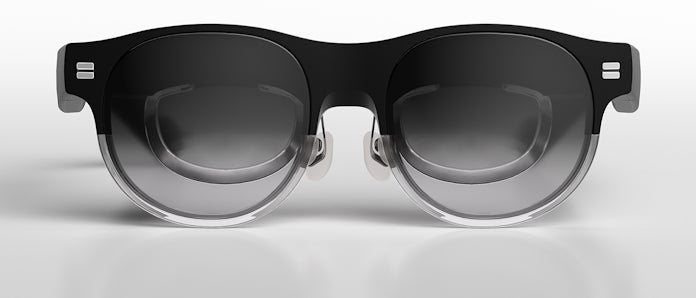Asus has announced a new wearable display in the AirVision M1, which promises to pack a multi-monitor experience into an ordinary-looking pair of glasses.
Expect 2024 to be the year (yes, another one) of press shots and videos featuring beautiful people sat in pristine living rooms, smiling benignly as a pair of goggles transports them into an augmented world.
One of those companies is Asus, which has just unveiled its AirVision M1 glasses at CES 2024. This isn’t an all-singing mixed reality headset, but rather something simpler and potentially just as interesting.
The AirVision M1 serves as an extra display for those who don’t have the desk space for such a thing, or a travel display for those who want to get real work (or play) done on cramped public transport. It could also serve as a separate screen when a certain someone is hogging the TV (you know who you are).
Thanks to 3 degrees of freedom positioning, you can pin a virtual display alongside your physical display, even as you move your head around and look elsewhere. It needn’t always be right in front of your face just because you’re wearing the glasses.


The related Windows app will even let you set up multiple virtual displays, oriented however you want, and you can shift focus between them with a simple turn of your head. Naturally, the viability and smoothness of this will be dependant on the capabilities of your laptop or PC. You’ll need to attach the AirVision M1 via a braided USB Type-C cable.
The device itself looks like a slightly chunky pair of glasses, but it utilises Micro OLED display technology to provide a virtual FHD display right in front of you. Asus claims that text will remain crisp and readable, while a 1100 nits peak brightness should keep images nice and visible even in bright natural lighting.
Gamers and action movie fans will be interested in the claim of low response times, while movie nuts will want to know that the Asus AirVision M1 covers 95% of the DCI-P3 color gamut.
There’s a multi-function touchpad into the left side of the frame, which can be used to play and pause video content, juggle between multiple virtual screens, and other things. Embedded noise-canceling microphones and speakers, meanwhile, should make it a handy video conferencing tool.


Indeed, Asus seems to be making big claims concerning the AirVision M1’s practicality as an everyday device. Besides its low key looks, the AirVision M1 benefits from a 57-degree vertical viewing angle, which is in excess of what we naturally see.
In other words, you’ll see way more of the real world through these glasses than through most competing AR devices, which tend to restrict the view to just 40-degrees.
Asus also seems aware that such a device will be used in confined or populated environments, so it’s ensured that the content you see remains for your eyes only.
Meanwhile, long term eye care is handled by Asus Eye Care tech, which minimises flicker and reduces exposure to blue light.
There’s no news on pricing or availability as yet, so we’ll have to keep an eye on this one.

